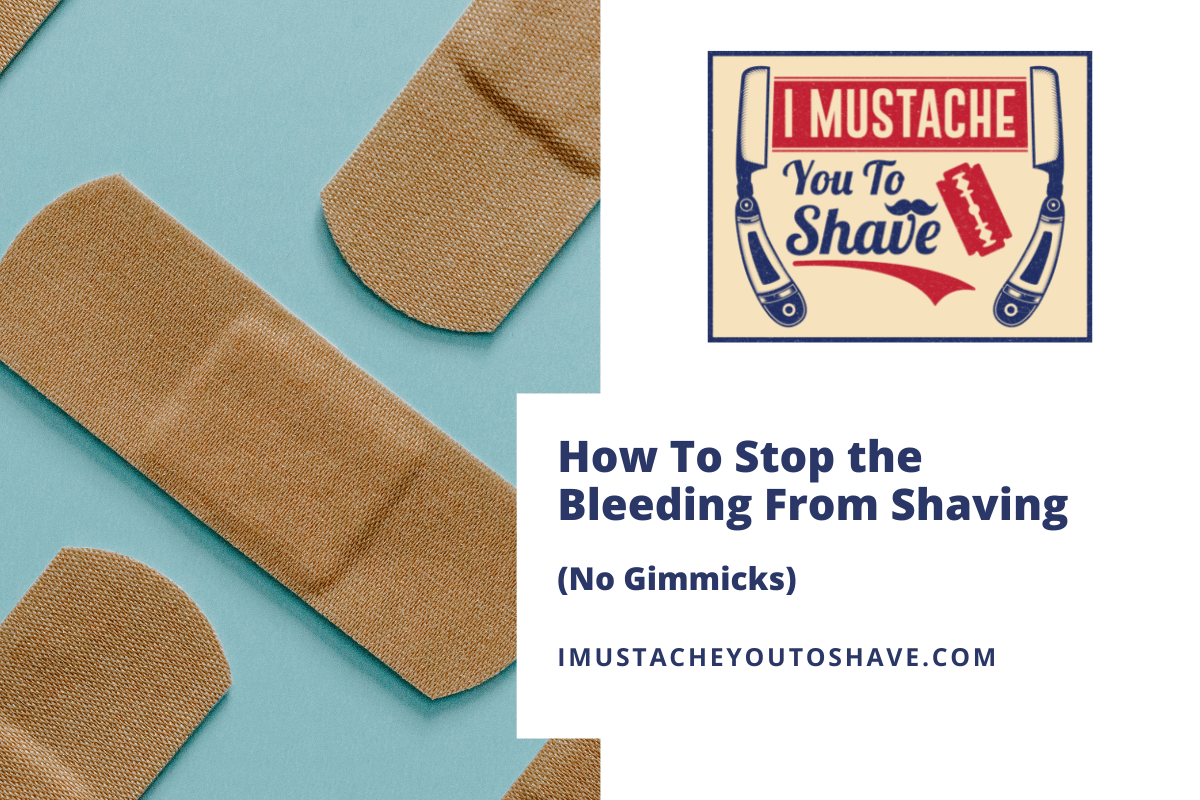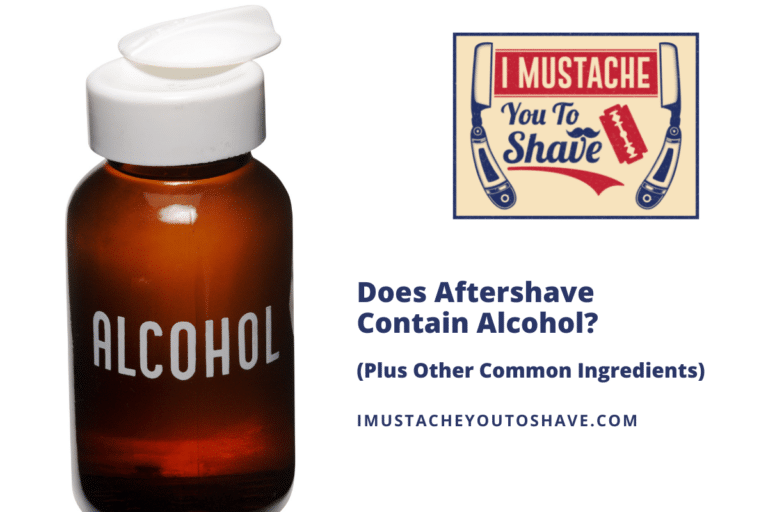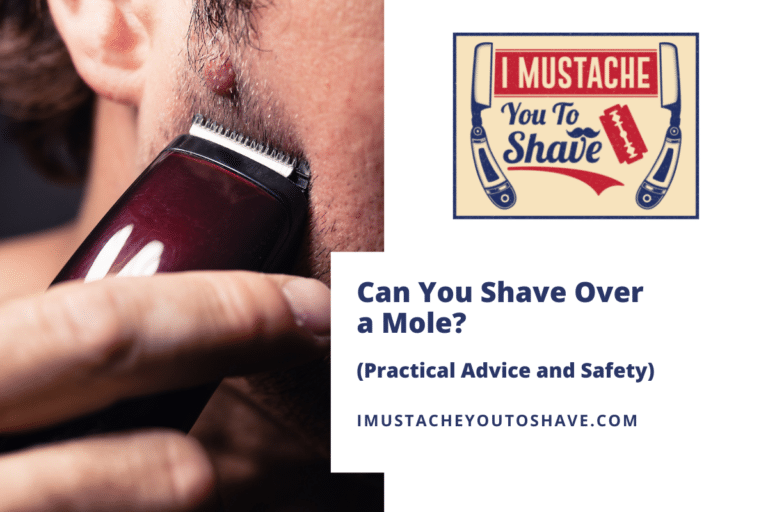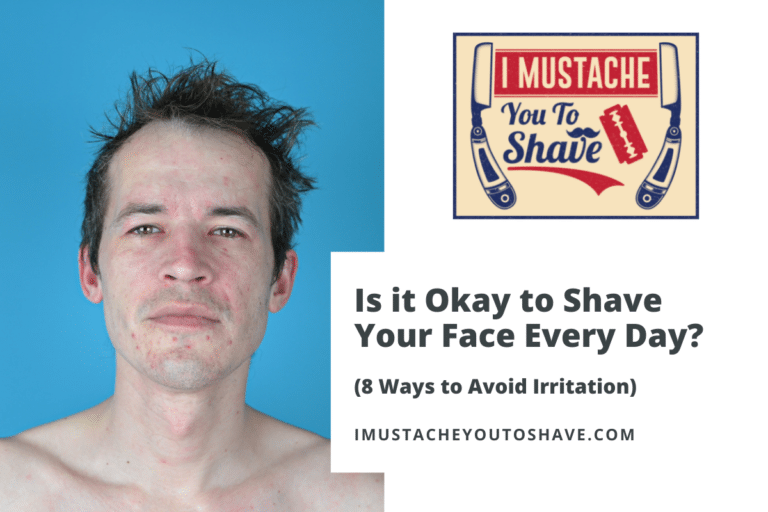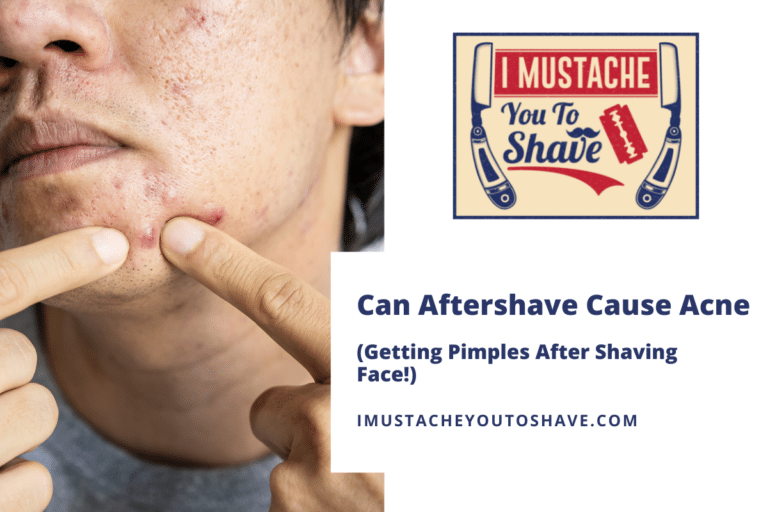How To Stop the Bleeding From Shaving (No Gimmicks)
If you lived in medieval times, a trip to the barber might include some intentional bloodletting along with a shave. Today, blood loss due to nicks and cuts is an annoyance, rather than a planned cleansing ritual.
While nicks and cuts cannot be completely avoided when shaving your face daily, there are several things you can do. To stop the bleeding quickly and with a minimum of mess, apply cold water or ice, pat the skin dry, and apply pressure. Once the bleeding has stopped, follow up with aftershave, apply alum, and nourish the skin to speed healing.
If you want to learn the best techniques for stopping the bleeding from shaving, read on!
How long do shaving cuts usually take to stop bleeding?
If you’ve ever cut yourself shaving before work, it can seem like it takes an eternity for the cut to stop bleeding.
Shaving cuts typically take one to nine minutes to stop bleeding. This is the time it takes for blood clotting to take effect. Certain medications can thin your blood and increase blood clotting times.
Many factors can determine where you fall in the blood clotting time range. The size and deepness of the cut, individual coagulation times, medications, and whether or not any intervention methods are being used can determine your bleed time.
Keep reading for our tips on how to decrease the amount of time it takes to stop the flow.
Fun Fact: During the 12th century, the church took away bloodletting duties from priests and monks. Barber surgeons filled this void by cutting hair, shaving faces, and performing surgical procedures all under one roof. The red on a barber’s pole represents the blood shed during these services.
How to stop bleeding from shaving FAST
If you’ve shaved for very long, you’ve likely grabbed some toilet paper in a pinch to stop the blood flow on your face.
While that method may be effective, it’s not necessarily the most attractive. Plus, once you rip the paper off, bleeding is likely to resume.
Stopping the bleeding from shaving as fast as possible requires a few steps. Constrict the blood vessels with cold water or ice, pat the skin dry, and apply pressure. Once the bleeding has stopped, follow up with products to fight bacteria, speed healing, and nourish the skin.
- Constrict the vessels
- Pat skin dry
- Apply pressure
- Follow up with an aftershave
- Protect with alum
- Spot treat
- Nourish the skin
Let’s look at each of these tips in more detail to see why they work.
Constrict the vessels
Cold causes shrinkage, and sometimes this is a good thing.
Cold temperatures constrict blood vessels causing them to slow down blood flow and aid in clotting. Rinsing your face with cold water will often be enough to stop the bleeding.
You can also apply an ice cube wrapped in a towel directly to the cut.
Pat skin dry
After applying cold water or ice, gently pat your face dry. Avoid wiping away any blood clots that have already formed.
If you continue to notice a trickle of blood, it’s time to apply some pressure.
Apply pressure
Holding a clean cloth to the offending cut while applying firm pressure can stem the bleeding within five or ten minutes.
This constant pressure allows the platelets an opportunity to bunch together and cause the blood to coagulate at the opening.
This does take some patience. If you release the pressure too early, the bleeding can start back up.
Follow up with an aftershave
Did you know aftershave can actually help with your nicks and cuts?
Aftershave products not only feel refreshing and smell nice, but they also help curb bleeding and disinfect broken skin. However, alcohol-based products can burn and be overly drying.
Witch hazel-based products are a more gentle option with antibacterial, astringent, and anti-inflammatory properties.
Protect with alum
An alum block is another tool to help stop bleeding in its tracks.
Potassium alum’s astringent properties shrink blood vessels and fight germ-causing bacteria. To apply to the skin, wet the alum block with water and rub it across the face. Let the thin, white film dry on your skin.
Once the bleeding has stopped, gently wipe away any residue.
Spot treat
Spot treating with a styptic pencil is another option to stop bleeding.
The pencil style allows you to only apply the alum where it is needed to stop the bleeding.
You might remember your dad or grandad keeping one of these small sticks in their shaving kit. They’ve been around for a long time because they are very effective. A styptic pencil contains alum in powder form.
This is a great option for travel, but it can burn when applied.
Nourish the skin
If you’ve endured a particularly painful shaving session, you should continue to nourish the skin to speed up healing and prevent further cut emergencies.
Exfoliating regularly can prevent a build-up of dry skin that can make shaving more difficult and dangerous. Applying a pre-shave oil before your shaving cream can add an extra layer of skin protection and improve the razor’s glide. Keeping your skin hydrated can keep it healthy and nourished.
Is it normal to bleed a lot after shaving?
Whenever you pair a sharp blade with delicate skin, accidents are sure to happen. However, nicks and cuts don’t have to be a regular occurrence after a shave.
If you are preparing the skin properly before you shave and you are using a sharp blade, it isn’t normal to bleed a lot after shaving. Most nicks and cuts are caused by operator error or poorly maintained shaving equipment.
Warm water, a rich shaving lather, and a sharp razor blade are keys to a smooth, nick-free shave. Also, shaving against the hair growth instead of with it can increase the potential for nicks and cuts.
Prepping your face before the shave and allowing time to slow down and enjoy the shave journey should eliminate frequent bleeding.
Why do shaving cuts bleed so much?
Your circulatory system is a tangled web of blood vessels and capillaries. These vessels lie just under the skin on the face and scalp, and even a small nick can cause seemingly a surprising amount of blood flow.
Shaving cuts on the face, head, and neck bleed a lot due to the vessels’ large number and close proximity under the skin.
With over 60,000 miles of blood vessels in our body, it’s no wonder a cut can have bloody consequences. The head and neck area is fed by three main arteries and miles of small vessels and capillaries. Thin-walled facial capillaries are located right under our facial skin. Just a small nick with a super-sharp razor blade can rupture the wall and cause blood to flow freely.

